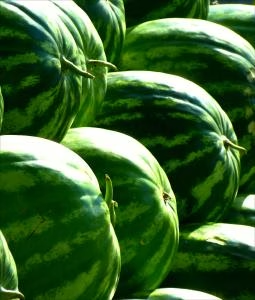Not only does watermelon contain more lycopene than tomatoes, it also doesn’t need to be cooked like tomatoes to increase absorption; it can be effectively absorbed raw. Besides red flesh, yellow-fleshed watermelon is also common. Compared to red, it contains more citrulline, which helps dilate blood vessels and thus prevent cardiovascular disease. How to use watermelon rind in cooking?
Watermelon is a berry
In daily life, watermelon is considered a fruit. However, scientists believe that, strictly speaking, it is a berry. This is because watermelon is produced from the ovary of a single flower, which meets the definition of a berry, but it has only evolved through long periods of evolution and breeding. Watermelon’s rind is hard, unlike the soft rind of berries like blueberries.
Watermelon is easy to use in cooking.
While watermelon is delicious eaten raw, its flavor is even more pronounced when heated. Chef Travis McShane of Adele’s Nashville restaurant says lightly toasting the ingredients can bring out their natural flavor.
Grilling watermelon balances its aroma and sweetness while trapping its internal moisture. His restaurant serves a dish featuring grilled watermelon paired with marinated lamb chops and Meyer Lemon, which has a citrus and floral aroma. Grilled or broiled watermelon can also be paired with a variety of ingredients, seasonings, and herbs to create a deeper flavor.
The rind itself is also edible.
As mentioned at the beginning of this article, watermelon contains citrulline, which dilates blood vessels and helps prevent cardiovascular disease. Traditional Chinese medicine practitioners also believe that watermelon has heat-relieving, thirst-quenching, and diuretic properties.
Citrulline is an essential amino acid that the human body cannot synthesize naturally and must be obtained from food. Most of the citrulline in watermelon is found beneath the rind, so when consuming slices of watermelon, consider consuming the whiter part at the bottom, or simply using it in cooking.
There are over 1,200 varieties of watermelon.
Currently, there are over 1,200 varieties of watermelon in the world. They range in size from seeded to seedless, and in flesh color from red to yellow. They come in a variety of shapes, including oval and round. In addition to the common oval and round shapes, they can also be artificially shaped like square and heart in places like Japan. The rind isn’t just green; it also comes in yellow, black, and other colors.
Unique watermelon varieties include the ultra-mini thumb-sized watermelon and several varieties with nearly white flesh, such as the so-called White Wonder.


Leave a Reply